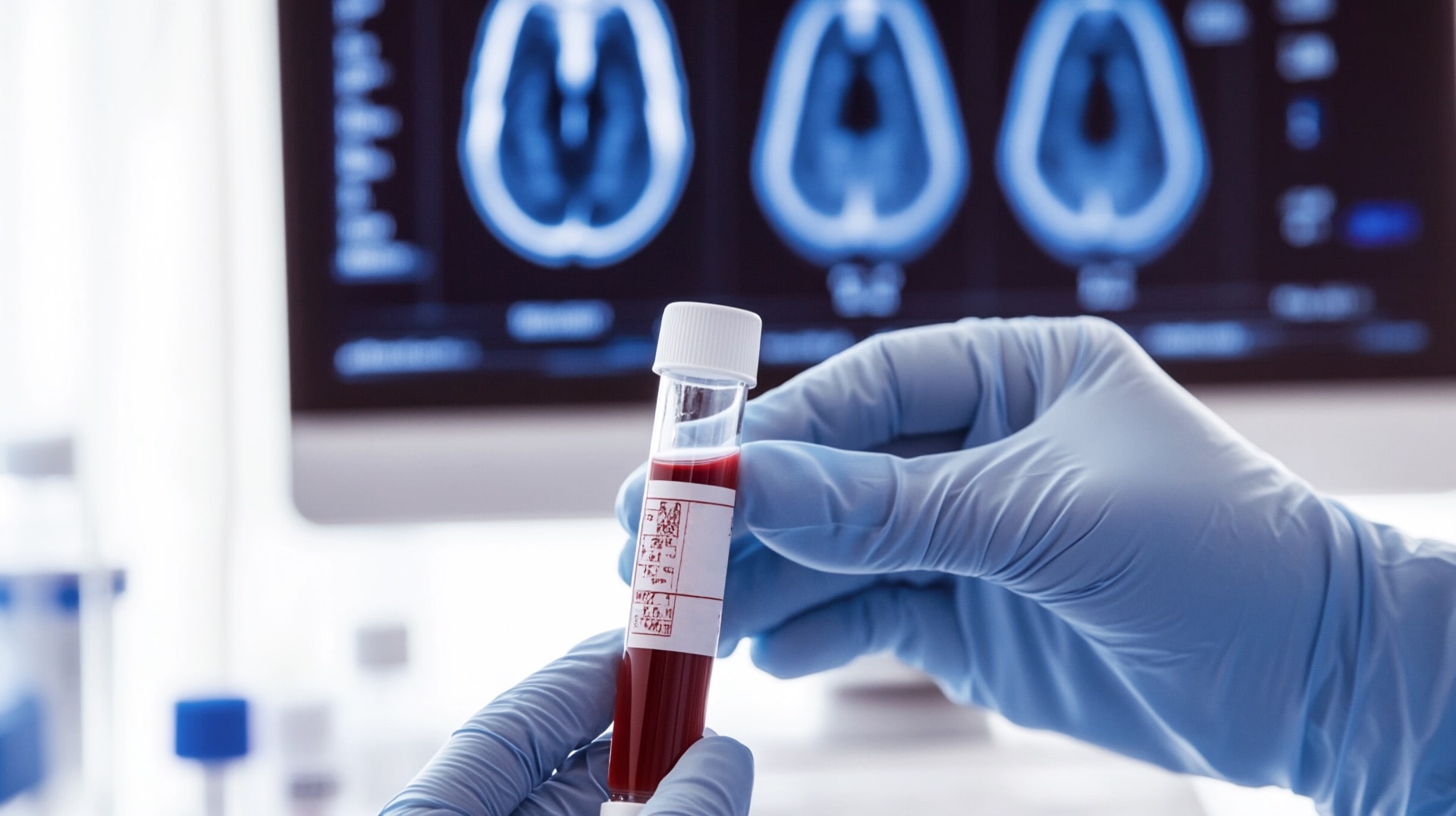You might be celebrating your 40th birthday feeling great, but your body could secretly be functioning like someone 15-20 years older. While chronological age simply counts years, your biological age tells the real story of how your cells, tissues, and organs are actually aging—and for many people, that story is alarming. There are common signs that indicate when aging is happening faster than normal, and recognizing these can help you take action before it’s too late.
The scary truth is that most people have no idea their body is aging faster than it should until serious health problems emerge. By then, years of accelerated aging have already taken their toll—this is known as premature aging, which occurs when the typical effects of growing older happen earlier than expected—making it much harder to reverse the damage. Missing these early warning signs could mean the difference between thriving in your later years or struggling with preventable age-related diseases.
Recognizing the 15 signs your body is aging faster than you empowers you to take immediate action. These scientifically-backed indicators reveal when your biological age exceeds your chronological age, giving you the opportunity to implement targeted interventions before irreversible damage occurs.
Having worked with hundreds of patients focused on longevity optimization, I’ve seen how early recognition of accelerated aging signs can completely transform health trajectories. The people who catch these warning signals early and act on them consistently achieve remarkable improvements in their biological age and overall vitality.
Key Takeaways
- Accelerated aging affects multiple body systems simultaneously, creating recognizable patterns that indicate your biological age exceeds your chronological age; these changes can occur at different rates depending on individual factors
- Early warning signs range from obvious changes like skin deterioration and energy decline to subtle indicators like sleep disruption and cognitive changes
- Understanding these 15 signs your body is aging faster than you are enables proactive intervention before irreversible damage occurs; signs of aging can appear at different rates for different people
- Many aging accelerators are modifiable through lifestyle changes, medical interventions, and targeted therapies
- Regular monitoring of these biomarkers can help track your biological age and measure the effectiveness of anti-aging strategies
Understanding Accelerated Aging: When Biology Outpaces Time
Accelerated aging occurs when your body’s biological processes deteriorate faster than they should based on your chronological age. This happens when the ten hallmarks of aging—including genomic instability, cellular senescence, and mitochondrial dysfunction—progress more rapidly than normal, creating a cascade of age-related changes throughout your body. The aging process is natural, but it can be accelerated by factors such as genetics, lifestyle, and environmental exposures.
Think of your body like a high-performance car. While every vehicle experiences wear and tear over time, some cars break down much faster due to poor maintenance, harsh driving conditions, or manufacturing defects. Similarly, some people’s bodies age dramatically faster due to genetics, lifestyle factors, environmental exposures, and underlying health conditions. Generally speaking, bodies naturally age over time, but some individuals experience these changes much earlier than expected.
The concept of biological vs. chronological age has revolutionized our understanding of aging. Research using advanced biomarkers like DNA methylation patterns, telomere length, and inflammatory markers reveals that people of the same chronological age can have biological ages that differ by 20+ years. Generally speaking, most people experience the aging process at a typical rate, but some show signs of aging much earlier than others.
The Science Behind Biological Age Acceleration
Recent studies tracking large populations over decades have identified specific patterns that indicate accelerated aging; these changes can occur earlier than expected in some individuals:
- Epigenetic clock acceleration: When DNA methylation patterns indicate an older biological age than chronological age
- Telomere attrition: Faster-than-normal shortening of protective chromosome caps
- Inflammatory aging (inflammaging): Chronic low-grade inflammation that accelerates multiple aging processes
- Metabolic dysfunction: Impaired cellular energy production and nutrient processing, which can affect overall health and energy levels
- Senescent cell accumulation: Buildup of dysfunctional “zombie cells” that secrete inflammatory compounds
Physical Signs of Accelerated Aging
1. Skin Changes Beyond Normal Aging
While everyone expects some skin changes with age, accelerated skin aging manifests as:
- Deep wrinkles and fine lines appearing 10+ years earlier than expected, often because decreased collagen production leads to wrinkled, sagging skin.
- Age spots and hyperpigmentation developing rapidly or extensively, including sun spots and dark spots caused by sun damage.
- Loss of skin elasticity with pronounced sagging, especially around the neck and jawline, as loss of collagen and skin fat contributes to sagging and thinner skin.
- Slow wound healing with cuts and scrapes taking weeks instead of days to heal.
- Dry, thin skin that bruises easily and shows visible veins and blood vessels, with dryness often worsened by lifestyle habits such as alcohol, poor diet, and stress levels.
Sun exposure, UV rays, and UV exposure accelerate skin aging, leading to sun damage, sun spots, dark spots, and broken capillaries. These factors can also lead to premature skin aging, making the skin appear older than it is. Wearing sunscreen and protective clothing is essential to protect the skin from sun damage and prevent premature aging. Remember to include the chest in your skincare routine, as it is also vulnerable to sun damage and aging.
Maintaining a balanced diet rich in vitamins, and avoiding poor diet, alcohol, and smoking, is crucial for healthy skin and to prevent premature skin aging. High stress levels and unhealthy lifestyle habits can lead to dryness, loss of skin fat, and more visible blood vessels. A consistent skincare routine and choosing effective skincare products support skin cells and improve the appearance of your skin. Certain interventions, such as improved diet and skincare, can help reverse signs of premature skin aging and prevent premature aging.
Visual suggestion: Side-by-side comparison photos showing normal vs. accelerated skin aging patterns
2. Dramatic Energy and Stamina Decline
Fatigue and reduced endurance that goes beyond normal aging includes:
- Persistent exhaustion even after adequate sleep and rest
- Exercise intolerance with dramatically reduced capacity compared to peers
- Post-exertional malaise where normal activities leave you depleted for days
- Afternoon energy crashes that require naps or stimulants to function
- Reduced motivation for physical activities you once enjoyed
3. Muscle Mass Loss and Weakness
Sarcopenia (muscle wasting) typically begins around age 30 but accelerates dramatically in some individuals. Incorporating strength-training and flexibility exercises into your routine can help maintain muscle mass and prevent weakness:
- Visible muscle atrophy in arms, legs, and shoulders
- Grip strength decline measurable with simple squeeze tests
- Balance problems and increased fall risk
- Difficulty with stairs or rising from chairs without assistance
- Loss of muscle definition even with maintained body weight
4. Joint Stiffness and Reduced Mobility
Accelerated joint deterioration manifests as:
- Morning stiffness lasting more than 30 minutes
- Chronic joint pain during normal activities
- Reduced range of motion in shoulders, hips, and spine
- Creaking or grinding sounds (crepitus) during movement
- Swelling and inflammation in multiple joints simultaneously
- Balance problems and increased fall risk, as joint stiffness and muscle weakness can contribute to balance issues as we age
Cognitive and Neurological Warning Signs
5. Memory Problems and Brain Fog
Cognitive decline beyond normal aging includes:
- Short-term memory lapses affecting daily function
- Word-finding difficulties during conversations
- Concentration problems lasting hours or days
- Mental fatigue from routine cognitive tasks
- Confusion with familiar tasks like technology use or following directions
It’s important to notice any new or worsening memory problems, as these changes may be early signs of accelerated aging and should prompt further attention.
6. Sleep Quality Deterioration
Sleep disruption often signals accelerated aging:
Getting enough sleep is crucial for cellular repair and slowing the aging process.
- Difficulty falling asleep taking 30+ minutes regularly
- Frequent night wakings with trouble returning to sleep
- Early morning awakening with inability to sleep in
- Non-restorative sleep waking unrefreshed despite adequate hours
- Changed sleep architecture with less deep sleep and REM sleep
7. Sensory Changes
Accelerated sensory decline includes:
- Vision problems like difficulty reading or night vision issues; age-related conditions such as macular degeneration can also contribute to vision decline
- Hearing loss especially high-frequency sounds
- Taste and smell changes affecting appetite and enjoyment of food
- Balance problems due to inner ear changes
- Touch sensitivity with numbness or tingling in extremities
Metabolic and Systemic Indicators
8. Weight Changes and Body Composition Shifts
Metabolic aging manifests as:
- Unexplained weight gain especially around the midsection
- Loss of muscle mass with proportional fat gain
- Difficulty losing weight despite diet and exercise efforts
- Changes in appetite with cravings for processed foods
- Blood sugar instability with energy crashes and mood swings
Significant weight and body composition changes can occur earlier than your actual age would suggest if you are aging faster.
9. Cardiovascular Changes
Heart and circulation problems indicating accelerated aging:
- High blood pressure developing earlier than family history suggests, as accelerated aging can lead to earlier onset of cardiovascular issues
- Elevated resting heart rate above normal ranges
- Reduced exercise tolerance with rapid heart rate during minimal exertion
- Cold hands and feet indicating circulation problems
- Irregular heartbeat or palpitations during normal activities
10. Digestive System Dysfunction
Gastrointestinal aging signs include:
- Chronic constipation or irregular bowel movements
- Acid reflux or heartburn becoming frequent
- Food intolerances developing to previously tolerated foods
- Bloating and gas after normal meals
- Changes in gut microbiome with increased susceptibility to infections
11. Immune System Weakening
Immunosenescence (immune system aging) manifests as:
- Frequent infections lasting longer than normal
- Slow recovery from illness or injury
- Autoimmune symptoms with the body attacking its own tissues
- Allergies developing to previously tolerated substances
- Chronic inflammation markers elevated in blood tests
Hormonal and Reproductive Changes
12. Hormonal Imbalances
Endocrine system dysfunction beyond normal aging:
- Thyroid problems with fatigue, weight changes, and temperature sensitivity
- Sex hormone decline affecting libido, energy, and mood
- Cortisol dysregulation with stress sensitivity and sleep problems
- Insulin resistance leading to blood sugar problems
- Growth hormone deficiency affecting muscle mass and recovery
13. Reproductive Health Changes
Accelerated reproductive aging includes:
- Early menopause or perimenopause symptoms
- Fertility decline beyond age-expected ranges
- Sexual dysfunction affecting libido and performance
- Prostate problems in men younger than typical onset
- Hormonal mood swings affecting daily function
Psychological and Social Indicators
14. Mood and Mental Health Changes
Psychological aging signs include:
- Increased anxiety about health and future
- Depression symptoms not explained by life circumstances
- Irritability and mood swings affecting relationships
- Social withdrawal from previously enjoyed activities
- Reduced stress tolerance with overreaction to minor problems
15. Recovery and Resilience Decline
Reduced adaptive capacity manifests as:
- Slow injury recovery with healing taking much longer than expected
- Exercise recovery problems with prolonged soreness and fatigue
- Stress sensitivity with minor stressors causing major impacts
- Illness susceptibility with frequent or prolonged sickness
- Environmental sensitivity to temperature, noise, or chemical exposures
Why Recognizing These Signs Matters
Understanding these 15 signs your body is aging faster than you are provides several crucial benefits:
Early Intervention Opportunities: Recognizing accelerated aging signs enables proactive treatment before irreversible damage occurs. Many aging processes can be slowed or reversed when caught early, but become progressively harder to address over time. Premature aging occurs when the typical effects of growing older happen early, causing the body to look and feel older than your actual age.
Personalized Health Optimization: Identifying which systems are aging fastest allows for targeted interventions. Someone showing primarily metabolic signs might benefit from different strategies than someone experiencing mainly cognitive decline. Recognizing the typical effects of aging can help differentiate between normal aging and accelerated aging.
Disease Prevention: Many of these signs predict increased risk for serious age-related diseases including heart disease, diabetes, cancer, and neurodegenerative conditions. Early recognition enables preventive measures that can dramatically reduce disease risk.
Quality of Life Protection: Addressing accelerated aging early helps maintain independence, cognitive function, and physical capacity throughout life, preventing the gradual decline that robs many people of their golden years.
Longevity Optimization: People who recognize and address accelerated aging signs often achieve remarkable improvements in both healthspan (years of healthy life) and potentially lifespan itself.
Summary and Action Steps
The 15 signs your body is aging faster than you are represent early warning signals that your biological age exceeds your chronological age. From visible changes like accelerated skin aging and muscle loss to subtle indicators like sleep disruption and cognitive changes, these signs reveal when aging processes have shifted into overdrive.
Key insights include:
- Accelerated aging affects multiple body systems simultaneously, creating recognizable patterns
- Early recognition enables intervention before irreversible damage occurs
- Many aging accelerators are modifiable through targeted lifestyle and medical interventions
- Regular monitoring helps track biological age and measure intervention effectiveness
Immediate Action Steps:
- Complete a self-assessment using the 15 signs checklist to identify your risk areas
- Consider biological age testing through DNA methylation analysis or comprehensive biomarker panels
- Consult with a longevity-focused healthcare provider to develop a personalized anti-aging strategy
- Implement evidence-based lifestyle interventions including exercise, nutrition optimization, stress management, and sleep hygiene, as well as daily habits like sunscreen use and avoiding excessive sun exposure to help prevent premature aging
- Schedule regular monitoring to track improvements and adjust strategies as needed
The future of healthy aging lies in early recognition and proactive intervention. By understanding these warning signs and taking action, you can potentially add years to your life and life to your years.
Frequently Asked Questions
Q: At what age should I start watching for these signs of accelerated aging?
A: You should begin monitoring for accelerated aging signs as early as your 30s, as many biological aging processes begin during this decade. In fact, some signs of accelerated aging can appear at a much younger age than most people expect. However, it’s never too late to start—people in their 60s, 70s, and beyond can still benefit from recognizing and addressing these signs. The key is beginning intervention as soon as possible after recognition.
Q: How many of these signs indicate I’m aging faster than normal?
A: Having 3-5 of these signs, especially if they’re more severe than expected for your age group, suggests potential accelerated aging. However, the severity and combination matter more than the absolute number. It’s best to discuss any concerning signs with a healthcare provider who can assess your individual situation and risk factors.
Q: Can accelerated aging be reversed, or just slowed down?
A: Recent research shows that many aspects of biological aging can be reversed, not just slowed. Studies on cellular reprogramming, senolytic therapies, and comprehensive lifestyle interventions have demonstrated actual reversal of aging biomarkers. However, the extent of reversal depends on how early intervention begins and individual factors like genetics and overall health status.
Q: Are some of these signs just normal aging that I should accept?
A: While some changes are normal with aging, the timing and severity matter significantly. If you’re experiencing changes 10-15 years earlier than your peers or family history suggests, this may indicate accelerated aging worth investigating. The goal isn’t to stop all aging, but to age at an optimal rate while maintaining function and vitality.
Q: What’s the difference between these signs and symptoms of specific diseases?
A: Many accelerated aging signs overlap with disease symptoms, which is why professional evaluation is important. However, accelerated aging typically involves multiple systems simultaneously, while specific diseases usually have more focused symptom patterns. Additionally, standard medical tests might be “normal” even when biological aging is accelerated, requiring specialized biomarker testing to detect.
References
- LeWine, Howard E. “Aging Overview.” Harvard Health Publishing, Harvard Medical School, www.health.harvard.edu/a_to_z/aging-overview-a-to-z.
- Mayo Clinic Staff. “Aging: What to Expect.” Mayo Clinic, 1 Nov. 2024, www.mayoclinic.org/healthy-lifestyle/healthy-aging/in-depth/aging/art-20046070.
- Yang, Jae-Hyun, et al. “Chemically induced reprogramming to reverse cellular aging.” Aging 15.13 (2023): 5966.
- Guo, Jun, et al. “Aging and aging-related diseases: from molecular mechanisms to interventions and treatments.” Signal transduction and targeted therapy 7.1 (2022): 391.








